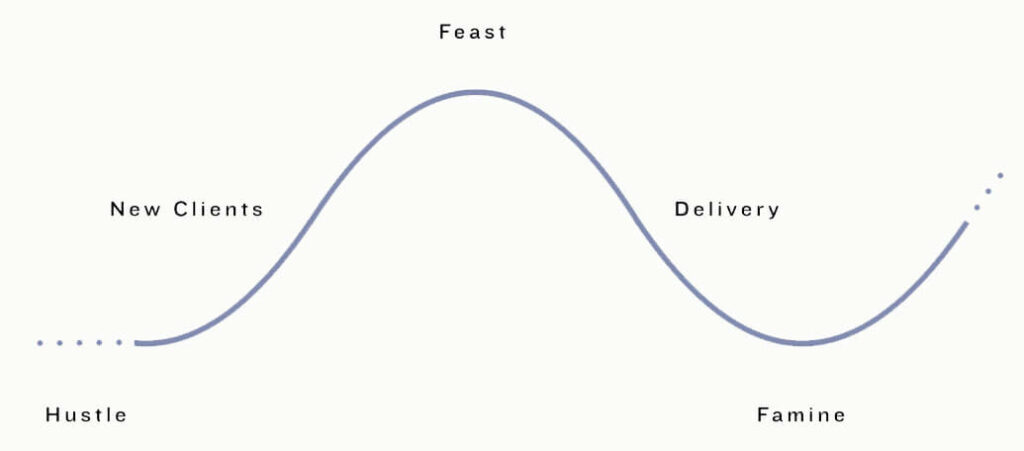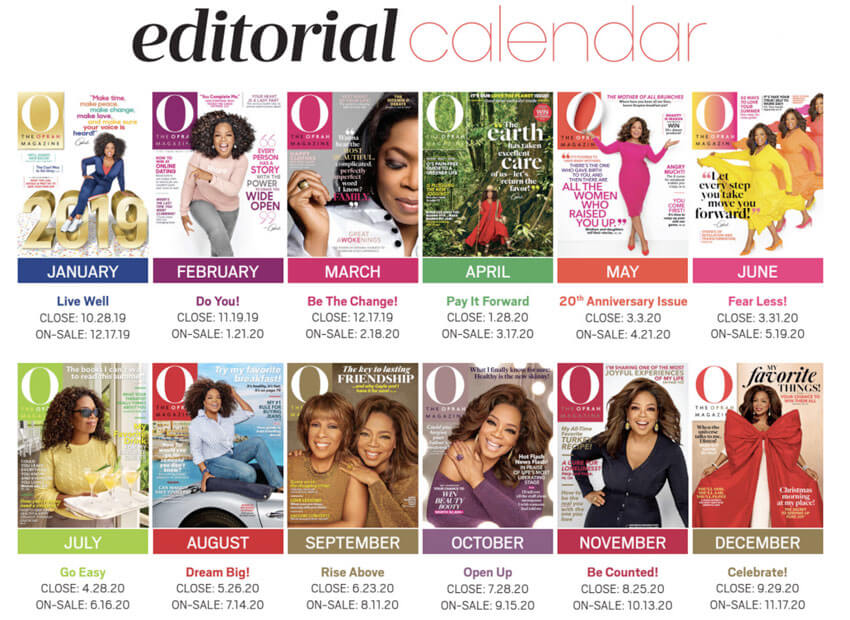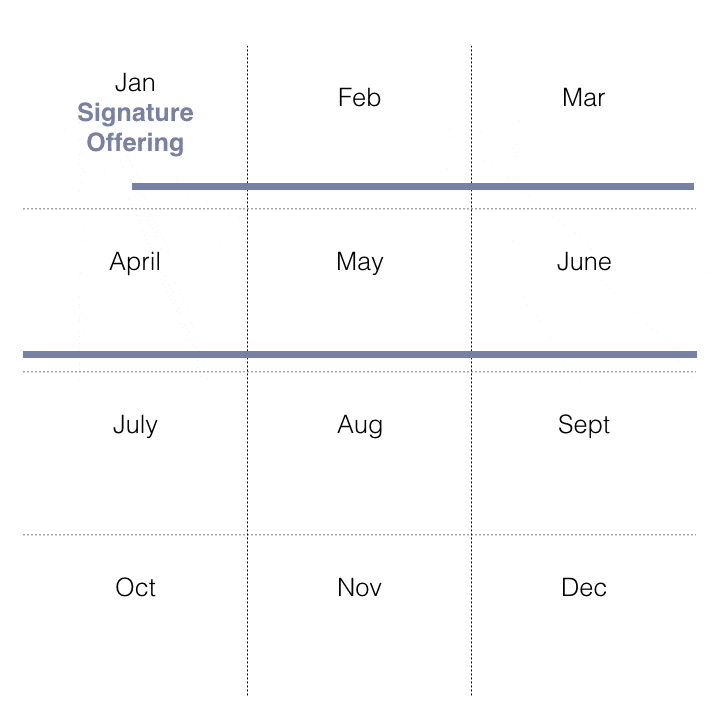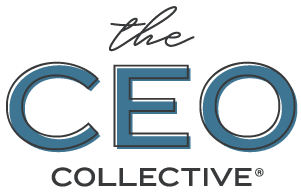The Feast or Famine cycle is among the top challenges for entrepreneurs and small business owners.

We all start out hustling to fill our client docket.
Once those clients are signed on, we get busy with client work and delivering our product, program, or service.
Then those clients wrap up… and the cycle starts all over again with hustling to find new clients.
The unsexy truth is: the only way you’re going to get out of this launch, feast or famine, panic-driven cycle in your business is to press pause, to slow down, and get a profit plan in place in your business.
So what is a profit plan?
This is literally the simplest strategy I’ve ever put in place for my clients.
This is exactly what we’ve been doing over at the CEO Retreat, this is what the CEO Planner is built around, and this is what we’re doing and helping people with even more inside the CEO Collective.
Much larger businesses and corporations all have strategic plans for how they are going to achieve their business goals – and oftentimes, small business owners feel like they are too small to bother with creating a strategic plan for their business.
But nothing could be further from the truth!
A strategic 12 month profit plan is a foundational business practice that allows those big companies to operate efficiently, determine where they are allocating resources, and keep everyone on the same page.
There are two key components to your 12 Month Profit Plan:
1: 5-Part Marketing Strategy
This strategy is precisely what we teach my clients, and how I run my business every week to consistently enroll new clients into my programs and services. It starts with a 5-Part Marketing Strategy::

I see things breaking down when the marketing plan is missing one of these five pieces of the puzzle, or they’re not consistently implementing these things into their business.
Let’s walk through what each of these are so that you can choose what you’re going to implement in each part of your marketing strategy:
Part 1: Attract
This is all about getting your business and your brand in front of new people who don’t know who you are. This could include multiple approaches::
Search. If people are actively searching for answers, how do they find you? Well, in the old days they’d pick up a phone book and look through the yellow pages to find businesses under that particular industry.
But these days… we all head over to Google, Yahoo, Pinterest, or YouTube to search for answers.
Search engine optimization definitely is an attract strategy. It generally takes a little longer for the results to grow, but over time, it brings organic traffic your way, so it’s a great long-term strategy.
Other People’s Audiences. This is my favorite way to not only attract new people, but build a lot of credibility for you and your business. This could include:
» Writing guest posts
» Interviews on podcasts or traditional media
» Guest teach or speak to other communities
There are a lot of ways you can get in front of other people’s audiences, and often it’s a great way to showcase and highlight your expertise.
Paid Advertising. The first two options are cash free, but they require time and energy. Paid advertising is a very viable way to get new people to your business quickly.
Of course, the downside is it’s going to cost you, and it takes a bit of testing in order to get this right. There are a lot of entrepreneurs who jump into ads without understanding how to get the return on ad spend – so I always recommend waiting until you’ve got the other 4 parts of this marketing strategy in place before activating paid ads.
Take Action:: Choose 1 key attract strategy to focus on for 90 days. Once you’ve got that strategy down, you can layer another strategy on top. Resist the urge to overcomplicate!
Part 2: Engage
99% of the time when people visit your website, they look around and then they leave. It’s up to us to get those people to stick so they can go from window shoppers to buyers!
We do that by asking for their contact information – usually their email – so we can follow up with them. In return, we may offer such value as::
» A consultation call
» A proposal
» A discount or free shipping
» Free training or content
If you’ve followed me for any length of time, you’ve probably heard me mention that I have things available for you on my website, like this 12 Month Profit Plan workbook 
These engage pieces are the first step in starting and deepening that relationship with potential clients. From there, you can follow up so they can make that decision for themselves whether or not you’re the right person to help them.
Take Action:: What is the engage step you want people to take in your business? This becomes the primary Call to Action in your marketing.
Part 3: Nurture
When most of us think about marketing, what we’re really thinking about is nurture marketing. This is what shows up to your existing audience each and every week… at a minimum, once a month!
The key is consistency, which is where many struggle.
What is your nurture marketing strategy? This could be as simple as::
» Choosing a CORE content platform (newsletter, blog, podcast, video)
» Posting and engaging on social media
» Actively nurturing and following up with your network
Take Action: What are you committing to in your nurture marketing? How will you stay consistent?
Part 4: Invite
This is where you flip the switch from marketing to sales. You have to have a clear invitation strategy, so you know exactly what you’re doing to invite people to that next step towards working with you.
If you’re looking to book more 1×1 clients, you might announce that you have X number of spots available to your existing audience (via emails and social media), then book consult calls with those who are interested.
If you’re looking to ‘launch’ a group program or service, you might simply send out a series of emails with all the details, or make a bigger impact by hosting a workshop or webinar to invite people into that offer.
Take Action: What is your invitation strategy? How will you convert those community members into paying clients?
Part 5: Delight
What are you doing to wow your customers?
Delight is an important part of a solid marketing plan, because it is easier and cheaper to keep an existing client than to go out there and find a new client!
If your business thrives on referrals or repeat business from your clients, you really want to make sure you’re thinking through, “What am I doing to delight my customers? What can I do with my customer experience to really take my clients’ experience of working towards and achieving their goals to the next level?”
Take Action:: What are you doing each month to deliver an incredible customer experience and delight your clients?
Once I’ve planned out my Five Part Marketing Strategy, I commit to it for at least 90 days before I layer more ideas and add more complexity to the business.
This approach gives so much clarity on WHAT we need to be doing – each week and month – to consistently show up and attract clients into our business.
Now that we know our Marketing Strategy, we can plug this into the 12 Month Profit Plan.
2: The 12 Month Profit Plan
Big businesses… they know what they are going to be selling MONTHS in advance.
Sometimes, YEARS in advance.
Think about your local Target (my favorite place to aimlessly wander and find everything from new throw pillows to skin care to cozy sweatpants). If you were to walk through Target HQ, you’d see a strategic plan that included every single promotion for the next 12 months.
I guarantee that in July, they have already planned their back-to-school promotions, pumpkin everything for fall, and the upcoming holiday decor trends. They could already show us today what will be in the stores 6 months from now.
Now I couldn’t get Target to share their calendar… but my very best friend Oprah has her editorial calendar right on her website (this is the 2020 calendar)!

Magazines are such a great example of how they plan IN ADVANCE what they are going to be selling. You can see that Oprah Magazine has already planned out the topics for each month for the next year, and has clear close dates for content and advertisers who wish to get into the magazine.
We can take lessons from this!
We have to create this kind of calendar that lays out what we are selling, when we are selling it, and how we are marketing it.
That’s where the 12 Month Profit Plan comes in (if you haven’t downloaded it yet, what are you waiting for?):
The first thing I’m thinking about with my 12 month profit plan is WHEN it’s best to launch certain offers.
Seasonality matters!
And some businesses are more impacted by it than others.
In my business, January has always been a great month because people are in the ‘Brand New Year/New Year New You/Goal-Getter’ zone. That has always been one of our biggest months to promote programs that help entrepreneurs to achieve business growth goals.
September has a similar vibe with a little more ‘Summer is over and it’s time to get back on track’ energy. We use that knowledge in our planning.
Summer months, on the other hand, can be a little slow for us. We know our clients are taking family vacations, traveling, juggling kids at home from school. So we generally don’t plan a big promotion during that time of year.
On the flip side, I have clients who are on a completely different schedule. I have some clients who THRIVE during the summer months (especially those who have vacation rental businesses), or get most of their sales in the fourth quarter (retail product businesses).
So take a moment and think about how seasonality could impact your business. If you’re not sure what is on your potential clients’ minds throughout the year, that’s when looking at editorial calendars from magazines like Oprah could be helpful!
Ok, once I’ve considered seasonality, I want to actually start plugging things into my 12 Month Profit Plan using this process::
Step 1: Life Before Business
This is a huge value for me and impacts every part of the business. I always start my planning with my life FIRST, then design my business to fit into that.
Each month, I look at my personal calendar and make notes of::
» Family birthdays
» School holidays
» Kid Events (Recitals, Concerts, Sports, etc)
» Vacations
» Personal Travel or Time Off
Having that in front of me has saved me more than once from attempting to run a big launch in January the same week as my twins’ birthday.
Step 2: Signature Offers
Next, we use the 12 Month Profit Planner to decide when we will sell our signature offering. This is the offer that generates the most revenue for your business, so we want to consider the seasonality of our business as we plan.
You can promote this offer more than once through the year. In fact, we actively plan 3-4 big public promotions of our signature offer The CEO Collective each year.
Not only does this approach increase the awareness of your signature offer in your community, but allows them multiple opportunities to join you.
And if you offer payment plans for your signature offer, you’ll quickly discover the joy of having Monthly Recurring Revenue. Nothing is better than knowing you’re starting the month with $5K, $10K, or $20K in payment plans hitting your Stripe account.

Step 3: Upgrade Offers
The next thing we plug into the calendar is an upgrade offering. You might have an offer that is available only for your existing clients – people who loved working with you and would like the opportunity to continue at a new level. These can be client-facing only, that the public never hears about.
We fill the CEO Accelerator Mastermind primarily with people who have already participated in The CEO Retreat or other programs. We may start this promotion internally just to existing clients and never need to publicly open seats. Knowing that helps us plan ahead!
The nice thing about having client-only offers is that it does give your audience a bit of a breather between large scale public promotions.
Step 4: Bite-Sized Offers
We also plug in smaller, bite-sized offers into the profit plan. Not everyone is going to be ready for your signature offer, so this is a great opportunity to serve some clients at a lower price point.
In my business, it’s The CEO Retreat. We host this event each quarter, and it’s a perfect bite-size taste of the work we do inside The CEO Collective.
By staggering the types of offers – all at different price points and levels of service – we give our community many opportunities to find our offering that’s just right for them.
Step 5: FREE Offers
That’s right!
We want to be dedicating some time to giving away tons of VALUE and treating it just as seriously as you might a big launch.
This is so important because we need to have dedicated times of audience-building in our calendar.
We have to remember that communities are either growing or shrinking. They don’t stay stagnant. But once people start leaving (unfollowing your business or unsubscribing from your email list) you need to replace them with someone new!
And if you want to GROW your revenues, you have to do more than just replace those who are opt-ing out of your community. Making sure you’re always offering some value, no strings attached, will make sure people stick with you.
Step 6: Marketing Marketing Marketing!
Now that we know WHAT we are selling WHEN over the next 12 months, we need to think about HOW we will be marketing that offer.
I want to make sure I’m thinking about that in advance. The night before the launch is a terrible time to be throwing together all of the pieces of the puzzle. We start marketing for all of our offers as many as 4-6 weeks in advance.
Step 7: Goals Check
Chances are you have other goals for your business this year.
Maybe you are working on a book.
Maybe you are dreaming of landing your first paid speaking gig.
Maybe you are working on a brand new program for your biz.
I want you to make sure that you are taking those consistent steps towards achieving those goals. So, each month, ask yourself what other milestones you need to hit to achieve your goals.
Download the 12 Month Profit Plan. It might take an hour to really sit down and plan everything out but this is a tool that will help you filter and guide decision making, and truly keep you laser-focused on the strategies that will move your business forward.
Having a 12 Month Profit Plan is almost like having a shield against all those shiny objects – all the trends, all the tips and tactics – because you can clearly decide if it fits or doesn’t fit with your overall plan. And that will move the needle for you faster than anything, I promise.
As we close out The Unsexy Secrets to Sustainable Success, we’re going to talk about how you can stay focused and actually STICK to your 12-month profit plan!
TLDR
1: Many entrepreneurs struggle with the Feast or Famine Cycle because they lack a strategy for consistent clients and cash-flow, aka a Profit Plan.
2: Without consistent Attract – Engage – Nurture marketing, there will not be new potential clients ready and waiting for the next opportunity to work with you.
3: Just like Target and Oprah, small business owners need to plan IN ADVANCE the specific offers they are selling with an eye towards building recurring revenue and predictable profits.

